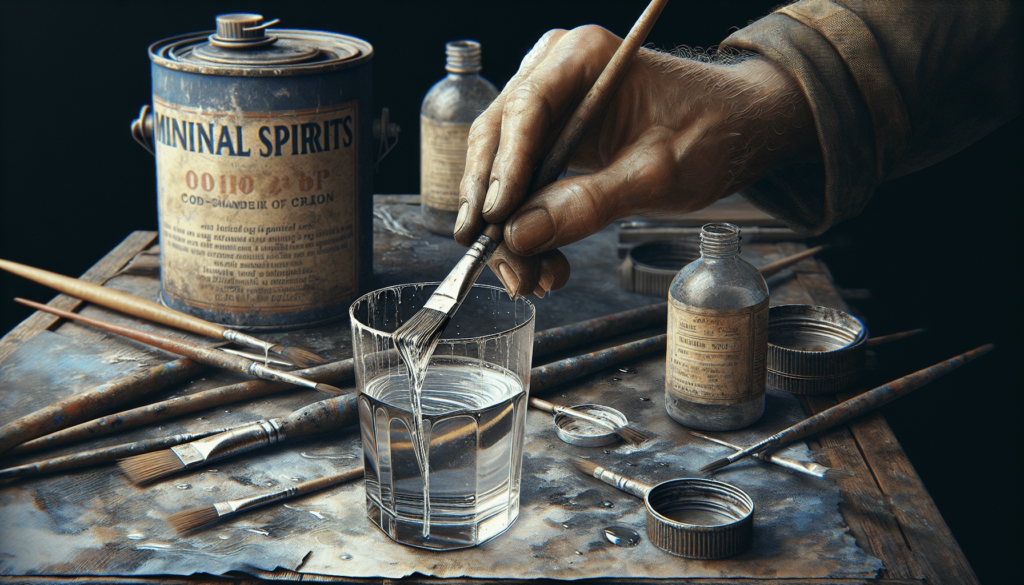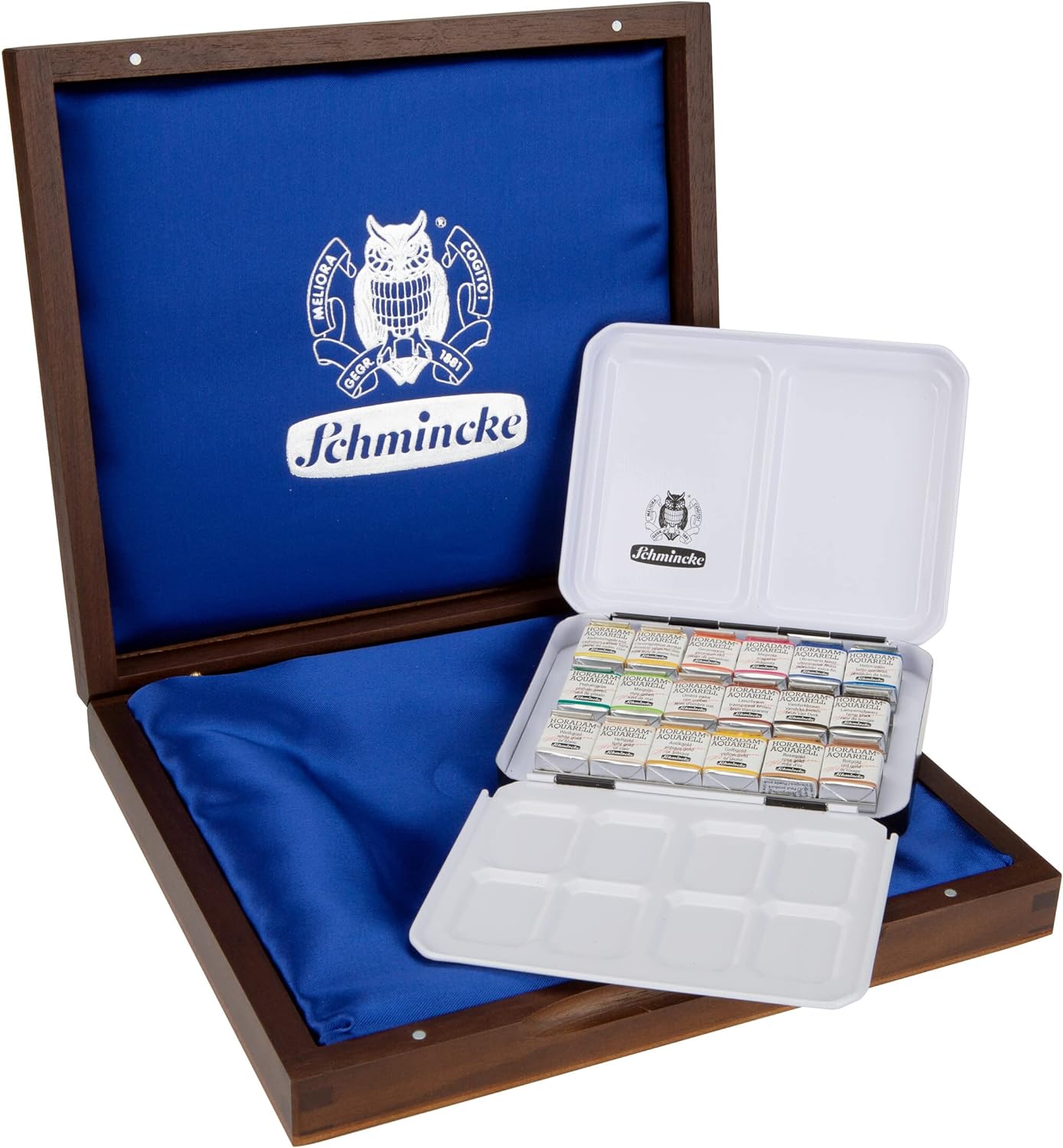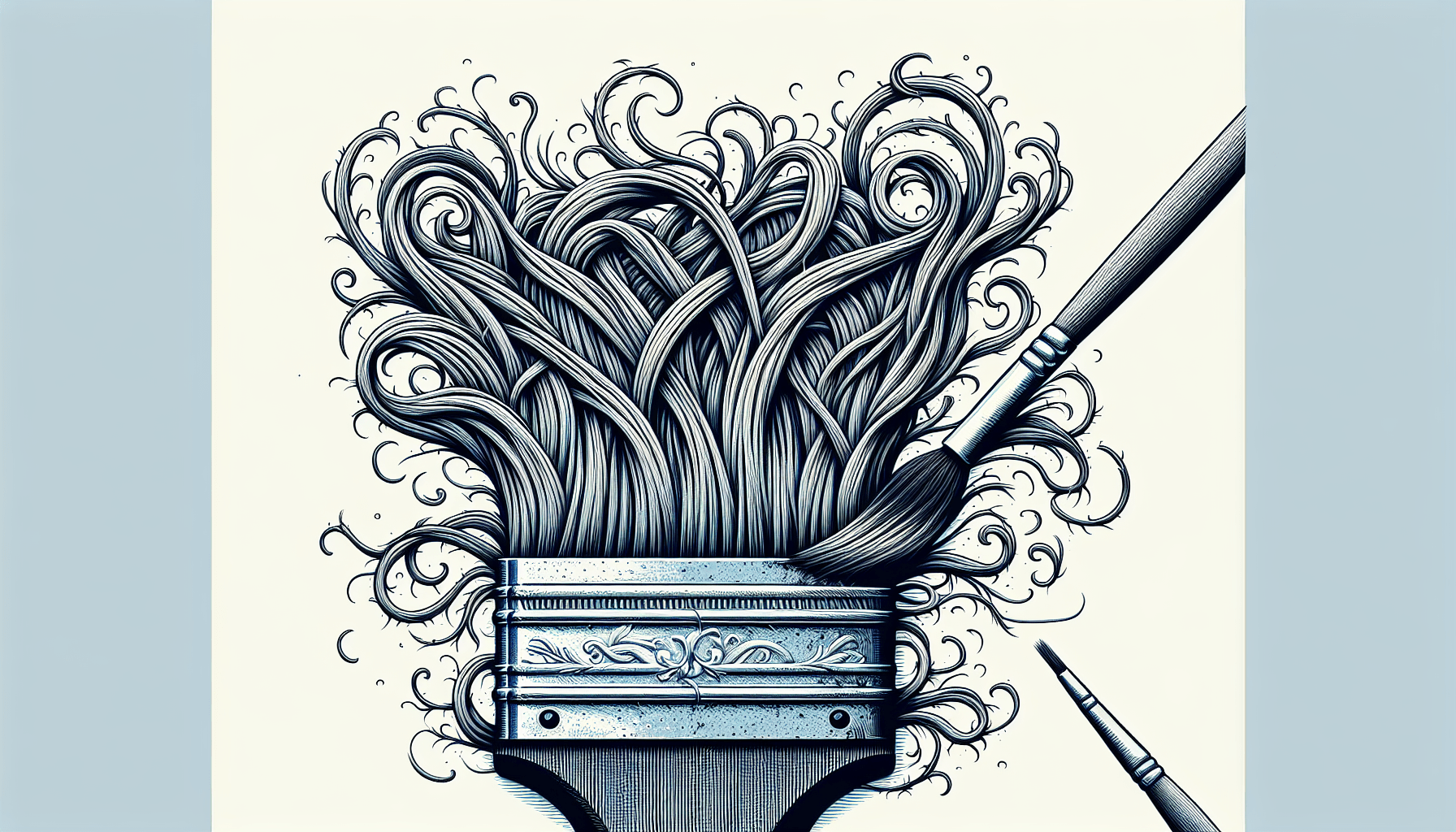Maintaining and preserving the life of your paint brushes is a significant aspect of your painting project’s success. This article meticulously guides you on the process of using mineral spirits to clean your paint brushes, a task that can prove tricky without proper knowledge. Start preserving your tools today and unleash the full potential of every stroke of color.
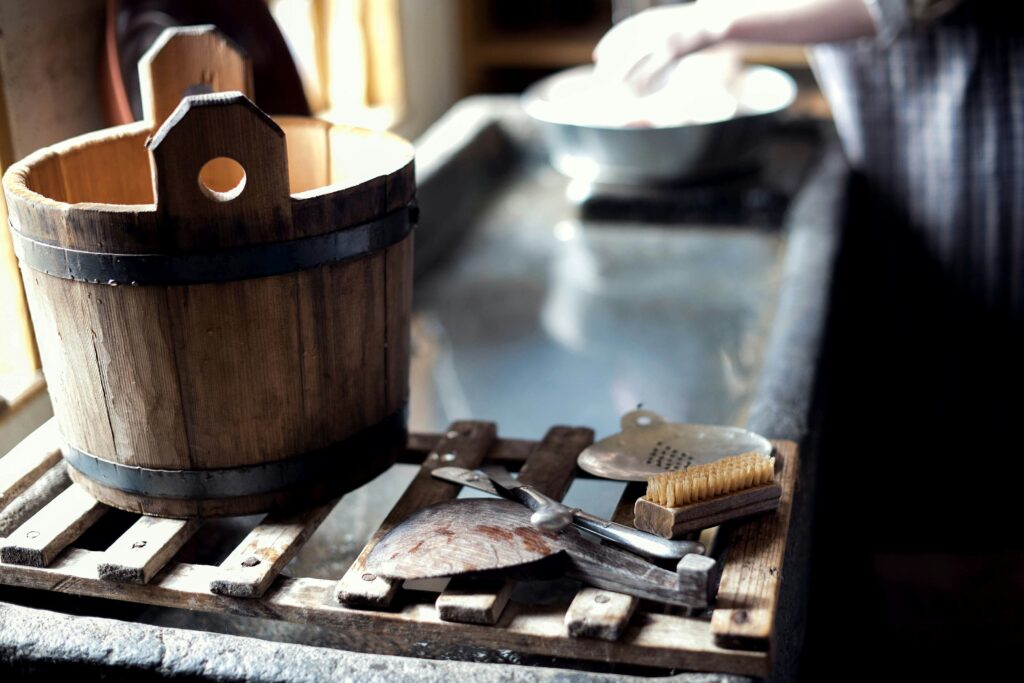
Supplies Needed
To effectively clean a paint brush with mineral spirits, make sure to gather all the needed supplies first. These include mineral spirits, a cleaning container (a jar or bucket will be sufficient), disposable gloves to protect your hands from the chemicals, and disposable rags or paper towels.
Mineral Spirits
Mineral spirits are a type of solvent that is highly effective at breaking down paint, making it a great tool for cleaning paint brushes. It is commonly available at paint or home improvement stores.
Cleaning Container
You will need a cleaning container to hold the mineral spirits during the cleaning process. This could be something as simple as a jar or a small bucket. The container should be able to comfortably hold your paint brush and mineral spirits.
Disposable Gloves
Using mineral spirits can be messy and may irritate your skin, so it’s always a good idea to wear disposable gloves when cleaning your brushes. Make sure the gloves are sturdy and resistant to tears or punctures.
Disposable Rags or Paper Towels
You will also need rags or paper towels for removing excess paint and drying your brushes after cleaning.
Preparation
Gather all necessary supplies
Before you begin, ensure to gather all the necessary supplies mentioned above. Having everything you need readily available will make the cleaning process more efficient and seamless.
Put on Disposable Gloves
To protect your hands from the solvent, it is crucial to wear disposable gloves. Carefully put on the gloves, ensuring they cover your hands completely.
Removing Excess Paint
Before you soak your brush in mineral spirits, it’s essential to remove as much excess paint as possible.
Hold the paint brush bristles side down
Hold your brush with the bristles pointing downward. This orientation will help most of the paint to flow out more easily once you start wiping it off.
Scrape off excess paint
Scrape the brush against the edge of the paint can or a disposable surface. This will remove a lot of the paint and make the rest of the cleaning process much more manageable.
Use a rag or paper towel to wipe away as much paint as possible
After scraping, use a rag or paper towel to wipe the remaining paint off the brush. The goal here is to remove as much leftover paint as possible before you introduce the mineral spirits.
Pouring Mineral Spirits
Fill the cleaning container with enough mineral spirits
Fill your cleaning container with enough mineral spirits to completely cover the bristles of the paintbrush. It’s important to ensure the bristles are fully submerged to really break down the paint.
Do not overfill the container
Avoid overfilling your container as it can lead to spills or waste. Just enough to cover the bristles is optimal.

Soaking the Brush
Place the paint brush into the container
After you’ve poured the mineral spirits, carefully place your paint brush into the cleaning container. Make sure all bristles are submerged in the mineral spirits for the most effective cleaning.
Allow the brush to soak
Leave the brush to soak in the mineral spirits for about 10 minutes. The soaking process will help loosen any dried or stubborn paint from the bristles.
Agitating the Brush
Remove the brush from the mineral spirits
After the soaking period, remove the paintbrush from the container.
Use your fingers or a cleaning brush to gently agitate the bristles
With the brush out of the mineral spirits, carefully agitate the bristles using your fingers or a cleaning brush. The goal here is to aid the mineral spirits in breaking down and loosening the paint.
Continue agitating until all the loosened paint is removed
Keep agitating the bristles until you see that all the loosened paint has been removed. This will ensure that your brush is thoroughly cleaned and ready for the next use.

Rinsing and Repeating
Remove the brush from the container
Once you’re done with the agitation process, remove the brush from the container.
Rinse the brush under warm water
Rinse the brush under warm water to remove any remaining mineral spirits and to ensure all the loosened paint is completely gone.
Repeat the soaking and agitating process
If after rinsing there is still paint left on the brush, repeat the soaking and agitating process until the brush is completely clean.
Drying the Brush
Shake off any excess water
Once the brush is clean, shake off any excess water. This will speed up the drying process.
Use a clean rag or paper towel
Use a clean rag or paper towel to blot the bristles and remove any additional moisture. Be sure to do this gently to preserve the integrity of the bristles.
Lay the brush flat or hang it upside down
To dry, either lay the brush flat or hang it upside down. This will ensure that water doesn’t pool at the base of the bristles, which could cause them to deform or become damaged.
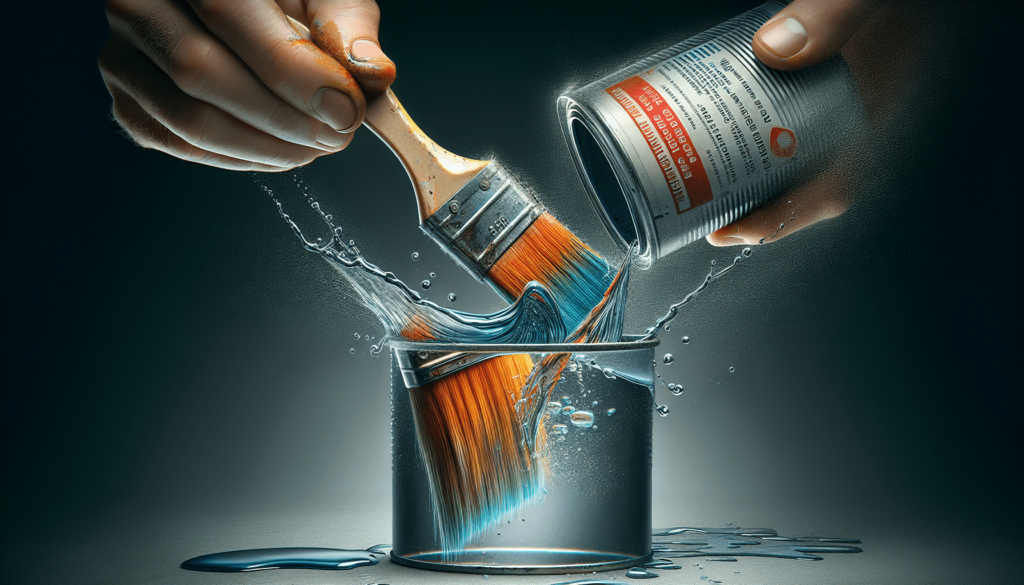
Dispose of Mineral Spirits
Transfer the used mineral spirits into a separate container
After cleaning your brush, you’ll need to properly dispose of the used mineral spirits. Transfer the solvent into a separate container for this purpose.
Check local regulations
Check your local regulations for guidelines on how to properly and safely dispose of mineral spirits. Because mineral spirits are a type of hazardous waste, it’s vital to dispose of them in a way that won’t harm the environment.
Cleaning Up
Finally, it’s time to clean up. Dispose of any used rags or paper towels properly. Remember to wash your hands thoroughly with soap and water to remove any residual mineral spirits. Following these steps to clean your paintbrush with mineral spirits will surely help ensure its longevity, giving you a tool that’s ready for your next painting project.
